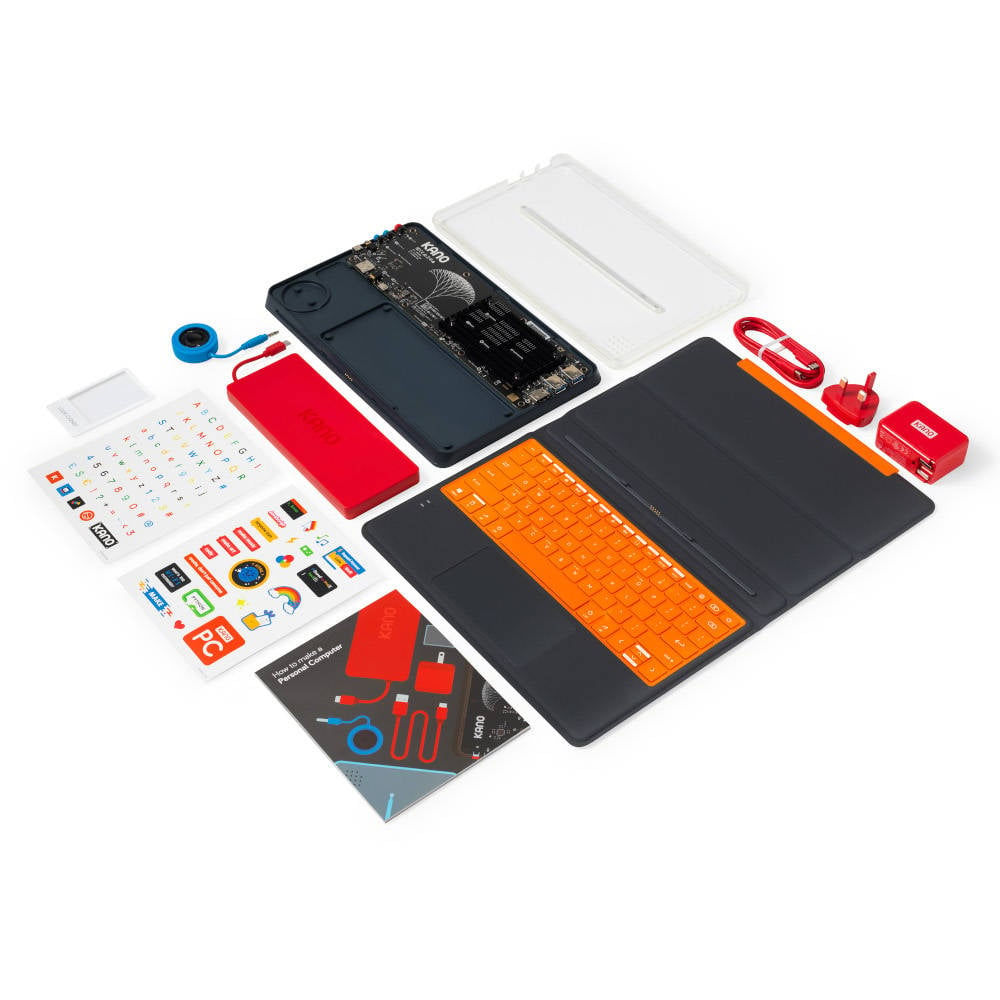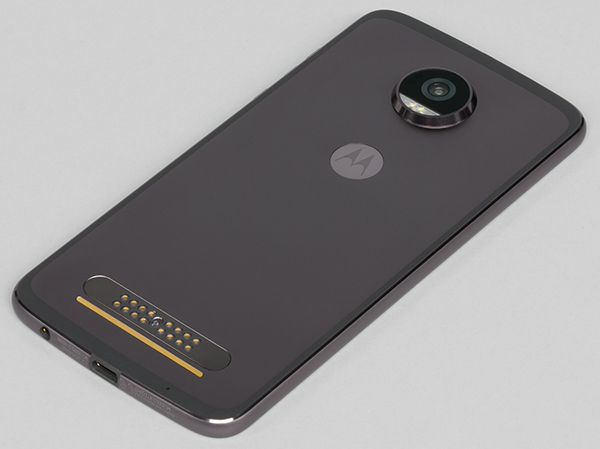
For several years in a row, Habré has published news and articles about modular gadgets - phones, laptops, watches. Almost all of these projects received strong support from the IT community. But over the past couple of years, the stormy stream of news about such gadgets has dried up to a barely gurgling information stream.
We decided to recall the past and found out what happened to those projects that were once on everyone's lips. Plus, see if there's anything new in the modular device market. The selection turned out to be subjective, and, perhaps, some interesting projects were not included in it. It will be great if you recall other existing and new initiatives of this kind in the comments.
Project ara

Of all the projects of modular devices, it was this one that caused the most noise and ... ended in nothing. But it all started very cool.
The essence of the project. In 2011, Google acquired Motorola Mobility with its patents and technologies. A couple of years later, the company announced Project Ara, which was supposed to change the future of mobile device development and the entire mobile industry in general. Who are we kidding - if this project were published, it would have caused dramatic changes in the entire gadget development industry.
The idea was to create a modular smartphone architecture. It would allow you to change absolutely everything - the camera, speakers, processor, display - plus connect all sorts of peripheral modules. For example, a carbon monoxide detector.
It was planned to create a small, medium and large platform, a base on which it was planned to install the modules using magnetic mounts. Ideally, the user would not have to buy a new smartphone every couple of years. It is enough to update the processor / RAM modules, cameras and you're done - you have a new powerful and up-to-date device in your hands.
What now? For three years, the developers have been publishing news, photos, announcements. But in 2016 the project was canceled, Google has announced a complete cessation of R&D in the field of modular smartphones. The official version of the closure: the problem with the magnetic fasteners of the modules - they simply popped out of the slots at the most inopportune moment. Unofficial version: the project was canceled due to the fact that modular devices would have made it impossible to sell smartphones at a price of hundreds and thousands of dollars. And this means lost profits of companies, which the market does not like. Who, then, will carry their money to stores after the announcement of new products?
Sometimes Project Ara is remembered, but the project is dead, you should not count on its revival.
Fairphone

Source: iFixit
Another project to create a modular smartphone, which started without much noise, but, unlike Project Ara, quickly reached the stage of practical implementation and is still alive.
The essence of the project. It is slightly different from Project Ara. If there was a talk about the fact that the phone could be updated by replacing modules, then here the idea is to simplify the repair process. Fairphone creators do not like the fact that many modern smartphones are very difficult to repair, so they decided to create the most maintainable phone. And it worked out - iFixit gave the device 10 out of 10 on the maintainability scale!

Source: fairphone.com
What now? As far as you can tell, everything is fine with the project. The third model of the "honest phone"appeared last year. Its characteristics:
- Processor - Qualcomm Snapdragon 632 8 x 1.8 GHz, Kryo 250.
- Graphics adapter - Qualcomm Adreno 506.
- Random access memory - 4096 MB.
- Display - 5.65 inches, 18: 9, 2160 x 1080 pixels
- Weight - 189 g.
- Communication modules - Wi-Fi, Bluetooth 4.2, GPS, NFC, 4G.
It is very easy to change individual modules; any user can do it without the help of service centers. Everything is fair: I bought a phone, you can use it and repair it if necessary.
The cost of the gadget is 450 euros, which is a lot. But they buy it.
Olimex TERES DIY Laptop

Source: habr.com
The modular notebook project was developed by the Olimex company from Bulgaria. The basis of the device is the Allwinner A64 processor. The creators of the laptop proposed an open design that allows you to add a large number of different modules, including GPS, GSM and others. The laptop is not sold ready-made, you need to assemble it yourself.
What now? The company's website is up and running, the devices are on sale for 240 euros. There are two variants of the same model - with a black and white case. In addition, there is USB for debugging.
Characteristics :
- Processor - Quad Core Allwinner A64 64-bit Cortex-A53.
- Display - LCD 11.6 "1366x768.
- RAM - 2GB DDR3L.
- Storage - 16GB eMMC.
- Modules - WiFi 150Mb, BLE 4.0.
- Ports - HDMI, 2 x USB, 3.5mm audio jack.
- The battery is 9500mAh.
- Weight - 980 gr.
The laptop is assembled quickly and without problems, even a child can handle it. Just for children and adolescents, such a device is a great way to get involved in IT. It's like Lego, only more electronics.
Any component of a laptop can be purchased or manufactured. Of course, it is not suitable for games, but for work (if your job is not video editing) it is quite.
Kano PC

Source: regmedia.co.uk
The developer of the new modular PC, the Kano company, appeared in 2013. She began selling kits and kits "keyboard, cables, Raspberry Pi", designed to build low-power PCs. The goal of the company is to teach children and adolescents the basics of assembling gadgets, basic things from the world of electronics and computing.
What now? The company is still working. In 2020, she befriended Microsoft and presented an already full-fledged convertible laptop. The partners have developed a device that will serve its owner after assembly. In addition, if a component fails during operation, it can be easily replaced. That is, the child will learn how to make simple PC repairs.
Specifications:
- Processor - Intel Celeron N4000 Dual Core 1.10 GHz.
- RAM - 4GB RAM DDR3L.
- Memory - 64GB (eMMC).
- Ports - 2 x USB 3.0, 1 x USB C, Wi-Fi 802.11 b / g / n Dual Band 2.4Ghz and 5Ghz, Bluetooth 5.0.
- Display - 11.6 "touchscreen with 1366 x 768 resolution, 720p HD.
- Audio - 3.5mm Headphone Jack, 3.5mm Speaker Level Jack, 1x Microphone.
- Video - 1x HDMI.
Blocks

Source: kickstarter
Blocks - the project of the world's first modular clock, the functionality and capabilities of which the owner could change at will. The watch modules are the links on the strap. The authors of the idea have developed modules with a heart rate monitor, fingerprint sensor and other components. The project appeared in 2015 .

Source: kickstarter
What Now? Everything went just fine at first. The developers have created a fundraising campaign for the project using Kickstarter. With the requested amount of $ 250,000, they raised $ 1,613,874.
But the good news ended there. Almost immediately, the company faced significant technical challenges. In 2016, upon learning of these problems, the partners who were responsible for the hardware and software elements of the device left the company.
In 2017, the developers sent out a small batch of devices to customers, but then they said that there was no more money, everything was spent on development and research, so more funds would be needed to release additional devices.
And in 2019, the company filed for bankruptcy. As far as is known, Blocks did not give money back to Kickstarter users who supported the project.
All modular devices of the past and present cannot be mentioned in the article, even if it is voluminous. Most likely, we will release the second part following the discussion in the comments. Some of the high-profile projects of the past have not gone beyond sketches and renders. There are also not very well-known, but rather interesting modular gadgets, which nevertheless appeared on sale. For example, Moto Z2 Play.

Source: ixbt.com
In this device, however, modularity is expressed simply in the ability to connect additional elements, and quite expensive ones. The phone itself is no different in structure from its kind. The components that are installed by default cannot be upgraded. So it seems to be modular, but this is a bit different from the “modularity” by which we selected the “heroes” of the text.